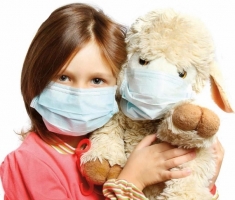How to Control Indoor Air Pollution
Pollution. We use the word to describe harmful or poisonous substances introduced into an environment. Water pollution, ground pollution, noise pollution, and air pollution are examples we most commonly relate to the outdoor environment. So it may surprise you to find that the United States Environmental Protection Agency (EPA) published reports that indoor air is 2-5 and in some cases up to 100 times more polluted than the air outside. This article will give you some recommendations to make your indoor air cleaner, healthier and safer. But first, the basics…
What is “air”?
Air is a mixture of gases that make up Earth’s atmosphere. The part of the atmosphere that contains the right mixture of gases to support life contains nitrogen and oxygen, as well as trace amounts of argon, carbon dioxide, helium, neon and other gases. Air also contains variable amounts of water vapor. We refer to the amount of suspended water vapor as humidity.
Humidity plays an Important role in indoor air quality.
The American Society of Heating, Refrigeration and Air-Conditioning Engineers (ASHRAE) recommends maintaining indoor relative humidity levels between 30% and 50% for human health
and comfort. Higher humidity can create an environment where microbes can flourish and create an unsanitary condition. In addition, higher humidity can result in condensation of water on surfaces. This can hold soils and organic matter, creating a perfect incubator for mold, which can exacerbate asthma and allergies.
Air suspends particles.
Most airborne particles are harmless. However, others can cause problems, particularly for those with asthma, allergies or immune disorders. There are four keys to keeping your indoor air clean and healthy: exclude, capture, clean and control.
Exclude – keep contaminants out.
Keeping contaminants out of the home is challenging because most airborne particles are tiny and can be everywhere. Pollen, carbon, mold spores, organic matter, insect matter, car exhaust, and plain old dirt enter the home, transported on air currents, clothing and shoes. Reduce entry by keeping your doors and windows shut, removing shoes when entering and immediately changing your clothing after dusty activities like yard work. There are other contaminants that originate from within the home. Pet and human dander, food particles, dust mites and their feces, cooking gases, sprays, chemicals, cleaning agents and many other particulates combine to reduce overall indoor air quality. Controlling these can be tricky, because they result from everyday living activities. Your best defense is to capture, clean and control them.
Capture – filter and contain that which enters.
When airborne particles enter your home, they remain suspended for a period of time. Large and dense particles drop out of the air and settle onto surfaces. Smaller, lighter particles remain suspended longer – some nearly indefinitely – and are best removed by air filtration devices and the filter on your home’s HVAC system. Pay attention to the filters you use. Use high quality pleated filters. Don’t buy based on price alone. Get filters that are rated MERV 7 or 8. Higher MERV ratings may place excessive restriction on your ventilation system, requiring a change in configuration. Talk to an HVAC professional for more information about how to improve filtration on your ventilation system.
Clean – remove pollutants from surfaces.
Eventually, particles settle on surfaces such as floors, furniture, counters, window sills, shelves and walls. Vacuuming and dusting removes most of the particles, but make sure your vacuum cleaner has good filtration too. Hard surfaces can be cleaned with electrostatic dusters or dust cloths that attract and hold particles, or by wiping hard surfaces with a damp cloth and wet mopping floors. Other surfaces such as carpet, area rugs and upholstery will require periodic professional cleaning to remove accumulated soils and pollutants.
Control – maintain equipment, humidity levels and filters.
Proper maintenance is important. Ensure your vacuum cleaner, AC unit, range hood and other ventilation equipment are working properly. Clean or replace furnace filters at recommended intervals; usually monthly depending on the type of filter and environmental conditions. Bluegreen can help you breathe easier indoors with regularly scheduled professional carpet and upholstery cleaning. Call us today to set up your clean and healthy maintenance program
